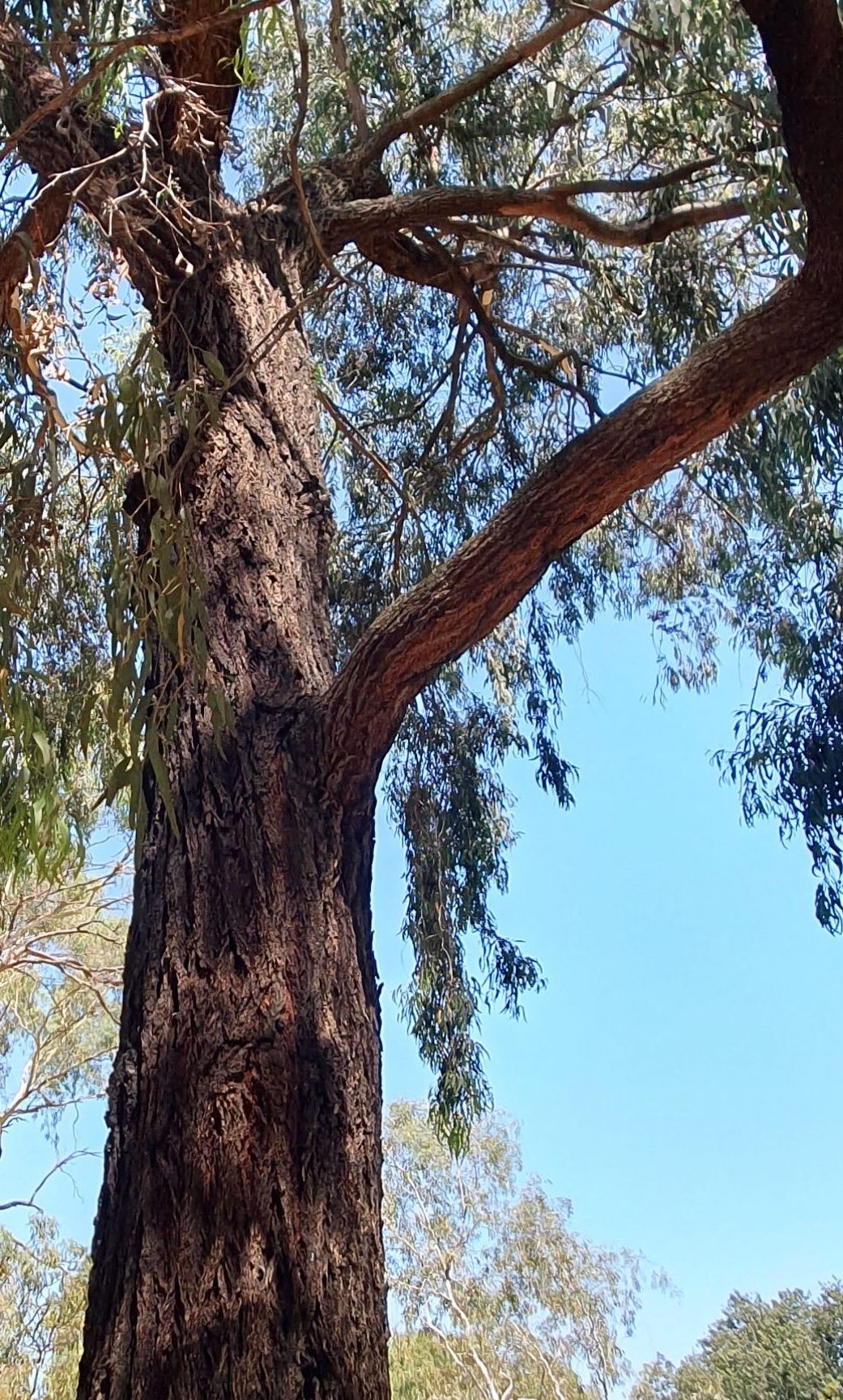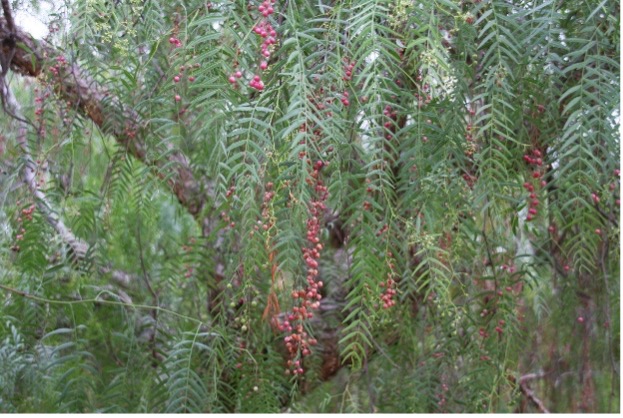Eucalyptus cameldulensis
River Red Gum

Description: Iconic and much-loved large tree often exceeding 30m and spreading to 15m. Multicolour flaking bark and massive trunk. Adult leaves grey-green, typical ‘gum’ leaves. Small white flowers in late summer. Fast growing. Long-lived, up to 1,000 years.
Cultivation: Easy to grow in most soils, although too large for most gardens. Prefers full sun. Tolerant of drought and frost.
Aboriginal Uses: Seeds used to be eaten. Known as “karra” in Kaurna language.
Other:
- Helps stabilise creekbanks
- May drop large limbs unexpectedly.
- Tree hollows provide homes for possums, lorikeets, etc.
- Timber is termite resistant and used for heavy furniture.
- Bird and butterfly attracting.
Eucalyptus sideroxylon
Red Ironbark

Description: A tall, single trunked tree often exceeding 10 metres in height and spreading to 15 metres. Features striking dark brown to black fissured bark, drooping grey-green foliage and with showy blossoms in red, pink, white, yellow or lemon.
Cultivation: Propagate from seed. Successful in a range of soil types. While fairly drought and frost tolerant, and fast growing in wet, warm seasons this tree does not cope well with permanently wet soil conditions.
Aboriginal Uses: Aboriginal people have used the wood and bark of Eucalypts for many purposes including shelter, firewood, and as a building material. Chemical compounds with anti-inflammatory properties have been discovered in this ironbark that may be useful in the treatment of arthritis.
Other:
- Attracts pollinators and birdlife like parrots and honeyeaters.
- Provides a food source and habitat for other wildlife such as possums and gliders
- Commercially grown and used in furniture and floor making.
- Native to the Eastern states but used commonly in parks and gardens in SA.
Large Tree (Non-Native)
Schinus molle
Peruvian Pepper Tree

Description: Originating in South America, this is the only introduced tree in the park. Pepper Trees have a wide canopy, drooping branches, and rough grayish bark and can grow up to 15 metres tall and wide. Commonly planted by first settlers, this is a legacy tree remaining from the time of settlement. The foliage is aromatic when rubbed, and red to pink ‘peppercorns’ follow the white to green flowers.
Cultivation: Naturally forms an attractive weeping shape without the need for pruning. The tree prefers a sunny location in well-drained soil. Cut any suckers off from the base as soon as they appear. Tube Stock is widely available in many Australian nurseries.
Uses: While the ‘peppercorns’ do feature in small quantities in mixed commercial pepper grinders, large volumes of the fruit can be toxic and the sap and resin of the tree can cause irritation.
Other:
- Tolerant of hot dry summers
- Seeds easily spread by birds
- Best not planted where fruit and flowers will drop on paths and driveways.
- This large invasive evergreen tree is now widespread throughout the dry interior.
